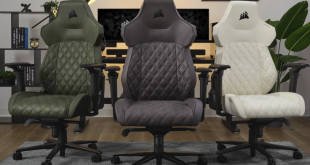Maintaining our performance graphs has been a full time job in the last couple of months – Nvidia and AMD have been hard at work updating their drivers and in this review we test with AMD's Crimson 15.11.1 driver and the Nvidia 359.06 WHQL driver. We also add in a new range of tests at 1080p to supplement the results at 1440p and Ultra HD 4K resolutions.
We have also selected some new game sections to benchmark during our ‘real world runs’.
Additionally, even though it is not close to being finished, we wanted to include some findings from an early access build of the (Windows 10) Direct X 12 capable Ashes of The Singularity by Stardock (website HERE) – this uses the Nitrous game engine. We are confident this is not an indication of how the game will run when it reaches retail at a future date, but still, it is interesting to showcase today. You can buy it from STEAM, over HERE.
If you want to read more about our test system, or are interested in buying the same Kitguru Test Rig, check out our article with links on this page. We are using an Asus PB287Q 4k and Apple 30 inch Cinema HD monitor for this review today.
If you have other suggestions please email me directly at zardon(at)kitguru.net.
Powercolor PCS+ Radeon R9 380X Myst Edition 4GB (1,020 mhz core / 1,475 mhz memory)
Comparison Cards on test:
Sapphire Radeon R9 Nitro 380X (1,040 mhz core / 1,500 mhz memory)
ASUS Strix R9 380X DirectCU II OC (1,030 mhz core / 1425 mhz memory)
PowerColor Radeon R9 390 PCS+ (1,010 mhz core / 1,500 mhz memory) & (1,150 mhz core / 1,693 mhz memory).
Sapphire R9 295X2 (1,018 mhz core / 1,250mhz memory)
AMD Fury X (1,050 mhz core / 500 mhz memory)
Nvidia GTX Titan Z (706 mhz core / 1,753 mhz memory)
Nvidia GTX Titan X (1,000 mhz core / 1,753 mhz memory)
Asus GTX980 Strix (1,178 mhz core / 1,753 mhz memory)
Nvidia GTX980 Ti (1000 mhz core / 1,753 mhz memory)
Palit GTX970 (1,051 mhz core / 1,753 mhz memory)
Sapphire R9 390X Tri-X 8GB (1,055 mhz core / 1,500 mhz memory)
Sapphire R9 390 Nitro 8GB (1,010 mhz core / 1,500 mhz memory)
Sapphire R9 380 Nitro 4GB (985 mhz core / 1,450 mhz memory)
Palit GTX960 Super JetStream (1,279 mhz core / 1,800 mhz memory)
Software:
Windows 10 64 bit
Unigine Heaven Benchmark
3DMark 11
3DMark
Fraps Professional
Steam Client
FurMark
Games:
Ashes Of the Singularity DX12 mode (early access build)
Grid AutoSport
Tomb Raider
Grand Theft Auto 5
Metro 2033 Redux
We perform under real world conditions, meaning KitGuru tests games across five closely matched runs and then average out the results to get an accurate median figure. If we use scripted benchmarks, they are mentioned on the relevant page.
Game descriptions edited with courtesy from Wikipedia.
 KitGuru KitGuru.net – Tech News | Hardware News | Hardware Reviews | IOS | Mobile | Gaming | Graphics Cards
KitGuru KitGuru.net – Tech News | Hardware News | Hardware Reviews | IOS | Mobile | Gaming | Graphics Cards



So, when choosing a 380X, would it really matter whether I take the Radeon NITRO or Powercolor? (Asus is so much more expensive, that it’s not worth considering)
As much as I am an AMD fan I don’t think these offer good value considering you can get a 970 for £235 or a 390 for £250.
Why not a 980 while you’re at it 😀 I don’t need a 970 with my gaming, but the 960 is not enough. Until that time that Nvidia makes a 960Ti, I’ll be considering a 380X. I can use that 35-50 for other fun things, such as games 😉
Not really Lucas — both NITRO and this Powercolor card are excellent, just minor differences between them.
At £195 this is nice, however just because 960’s are still so inflated, it shouldn’t be the counterbalance as to why this price is like it is.
Actually when up against some “Uber 960” like the Palit GTX960 2Gb Super Jetstream that’s £176, or this 380X Myst Edition “4GB” for 11% more I call it the winner! Given it provides a person who might consider upgrading to 1440p at some time (5-8 months) before the next generation cards, for now it’s the better value.
While you might consider a 390/970… in the case of a 970 those are starting £260, adding 32% is a big jump and rightfully so, but if just 1080p now and thinking a panel upgrade, a 3.5+.5Gb might seem a little dull once you have a 1440p. Especially with next gen-cards coming in right in such a time-frame. Even a 390 8Gb at £250 and only 1080p it’s a hard sell, I’d pocket the 30-32% now and see where it takes you if and when you have that new panel.
The 390 is actually cheaper here in the states, and that fact the the 390 edges out the 970 in most 1080p benchmarks and pretty much all 1440p benchmarks, the 390 is probably the best price:performance card in the American market. Currently you can get one for $279 or £184.…wow, you guys pay a lot more in Britain
What is this Pallit 970 that I’ve ONLY seen in Kitguru’s benchmarks? And why is it beating the 390 when in 99% of every other 390 benchmarks I’ve seen, the 390 is beating the 970 stock and with an overclocking? I’m just curious as to where Kitguru obtained the one 970 in the world that’s faster than every other 970 in every other professional review in the world?
It all depends on the clock speeds, that is what is relevant – the GTX970 we use isn’t a reference card. all the clock speeds are listed. Same as the R9 390 – it will beat a R9 390X when you manually overclock it.